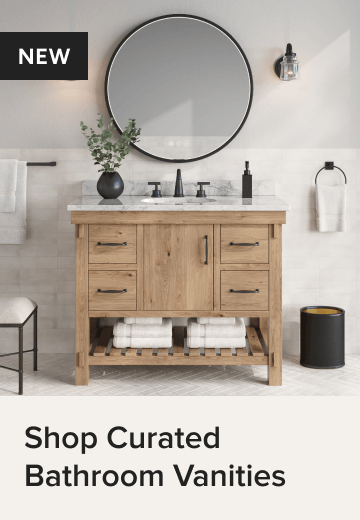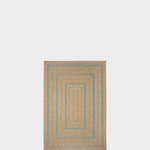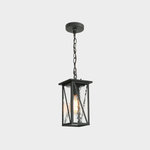Yard of the Week: A Sociable and Stylish Family Retreat
Bold structures, soft plantings and an inviting outdoor lounge breathe new life into a tired, unused backyard in England
Describing it as the “final piece of the puzzle,” Paul and Tracey Richards couldn’t wait to transform the neglected backyard of their 1930s home in Hertfordshire, England. They’d renovated their home’s interiors and were eager to create a stylish yet low-maintenance outdoor space where the whole family could relax and socialize.
After: Neighboring properties overlook the north-facing yard, so the family wanted to include a private space where they could spend time together, entertain friends and generally kick back and unwind.
“Paul and Tracey’s initial thoughts were to construct a large garden studio at the very end of the plot, but it quickly became clear this would be a costly option,” Scott says. “Instead, we went for a slightly raised deck area, which we covered with a [wood] pergola to provide privacy.” (This view shows the new back deck looking toward the house.)
Find a local landscape designer on Houzz
“Paul and Tracey’s initial thoughts were to construct a large garden studio at the very end of the plot, but it quickly became clear this would be a costly option,” Scott says. “Instead, we went for a slightly raised deck area, which we covered with a [wood] pergola to provide privacy.” (This view shows the new back deck looking toward the house.)
Find a local landscape designer on Houzz
The three-month build, which started in April 2020, coincided with the country’s first pandemic lockdown. “Getting hold of landscaping materials was rather tricky,” Scott says. “Even securing basic items such as timber and fixings took much longer than usual and impacted on the budget too.”
Nursery plant prices shot up as well, so every item on the detailed planting list had to be carefully reviewed. Smart choices, such as opting for younger trees and smaller plants rather than the larger, more mature specimens that were originally planned, helped to keep costs down without compromising the overall design.
Nursery plant prices shot up as well, so every item on the detailed planting list had to be carefully reviewed. Smart choices, such as opting for younger trees and smaller plants rather than the larger, more mature specimens that were originally planned, helped to keep costs down without compromising the overall design.
Scott and the couple chose composite decking for the large seating area at the end of the landscape. These boards are strong, durable and easy to clean, and are made from a combination of plastic, resin and waste wood fibers left over from the lumber industry.
The resulting deck is spacious, bathed in sun for much of the day and roomy enough for a modular L-shaped sofa and Acapulco-style chairs. A couple of loungers sit to the left side, where the family can enjoy views back toward the house.
Shop for patio furniture on Houzz
The resulting deck is spacious, bathed in sun for much of the day and roomy enough for a modular L-shaped sofa and Acapulco-style chairs. A couple of loungers sit to the left side, where the family can enjoy views back toward the house.
Shop for patio furniture on Houzz
The Pehrsson Scott team designed the custom wood pergola with a chic and contemporary lattice detail. The structure adds interest and contrast to the landscape’s soft planting and visually links back to the house. “We opted for western red cedar for its ability to cope well with the elements and also for its beautiful rust tones,” Scott says.
What to Know About Adding a Pergola
What to Know About Adding a Pergola
The plantings surrounding the deck reflect the wood’s rich hues. ‘Karl Foerster’ feather reed grass (Calamagrostis x acutiflora ‘Karl Foerster’, USDA zones 4 to 9; find your zone) showcases red-tinged golden flower clusters, while paperbark maple (Acer griseum, zones 4 to 8) and Japanese flowering cherry (Prunus serrulata, 5 to 8) are both eye-catching specimens. Pom-pom-headed flowering allium (Allium sphaerocephalon, zones 4 to 8), seen here, adds extra structure and texture.
Surrounding the edge of the decked seating area with planting creates a peaceful and secluded spot that feels removed from the rest of the house.
“We laid a data cable down the length of the [yard] to the deck to provide a reliable Wi-Fi connection — something [the homeowner] has particularly enjoyed while working from home,” Scott says.
Gas fire pit: Solus Decor
“We laid a data cable down the length of the [yard] to the deck to provide a reliable Wi-Fi connection — something [the homeowner] has particularly enjoyed while working from home,” Scott says.
Gas fire pit: Solus Decor
A long path connects the house to the deck. It was originally going to be paved, but rising costs led the team to go for gravel instead. They chose Irish Barley Quartzite for its pale cream tones with flecks of brown, which tie in with the wood arches and pergola.
New to home remodeling? Learn the basics
New to home remodeling? Learn the basics
Three wood arches line the gravel pathway. In addition to adding height and structure, they visually stretch the space and frame the cozy seating area on the deck. “We used western red cedar for the arches to tie in with the pergola and create a cohesive feel,” Scott says.
The material choice impacted labor costs and slightly delayed the project. Because it was a strong but porous softwood, “it was important not to place it directly on the ground, which would cause it to soak up moisture and rot,” Scott says. “Instead, we had to have stainless-steel ‘shoes’ made for each upright and bed them in concrete. This proved rather time-consuming, but it was essential if the timbers were to last in the changeable U.K. climate.”
The material choice impacted labor costs and slightly delayed the project. Because it was a strong but porous softwood, “it was important not to place it directly on the ground, which would cause it to soak up moisture and rot,” Scott says. “Instead, we had to have stainless-steel ‘shoes’ made for each upright and bed them in concrete. This proved rather time-consuming, but it was essential if the timbers were to last in the changeable U.K. climate.”
Showy Lily of the Nile (Agapanthus ‘Headbourne Hybrids’, zones 7 to 11), seen here, makes a striking statement. A real sun-lover, it adds an exotic feel to this contemporary-style garden.
A trio of paperbark maple trees, with their attractive peeling red bark, intersperse large, shallow bowl planters. “We originally had three of these planted up with agapanthus dotted in between the shrubs to introduce a sense of rhythm and contrast of form and materials,” Scott says. “But the owners have since relocated one nearer to the house, which works really well, and further links the two areas together.”
Crisp lines and tactile planting strike an elegant balance in this well-used family landscape. Tiers of shrubs and young statement trees merge seamlessly with the mature trees in surrounding plots. The new plants include kousa dogwood (Cornus kousa, zones 5 to 8), serviceberry (Amelanchier lamarckii, zones 4 to 8) and star magnolia (Magnolia stellata, zones 4 to 8) and were chosen for their year-round interest.
More on Houzz
Read more landscape design stories
Get landscape design ideas
Find a landscape designer or architect
Shop for outdoor products
More on Houzz
Read more landscape design stories
Get landscape design ideas
Find a landscape designer or architect
Shop for outdoor products














Who lives here: Paul and Tracey Richards and their three children
Location: Hertfordshire, England
Size: 3,822 square feet (360 square meters); 98 feet long and 39 feet wide (30 meters long and 12 meters wide)
Landscape designer: Henry Scott of Pehrsson Scott
Before: The yard consisted of a rather tired lawn flanked by narrow borders and also featured a less-than-lovely and rather underused climbing frame. A few mature trees in neighboring yards added greenery and height to the view, but the yard’s only noteworthy plants were a few sparse shrubs. Unsure of where to start with the project, the homeowners called in landscape design firm Pehrsson Scott.
“It was very clear that the [yard] no longer served the family’s needs,” says Henry Scott, company director. “The only space to sit and relax in the decent-sized plot was right by the house, in the shade, while the sunny area at the end of the [property] was totally underused.”
Creating a visual link and flow from the front of the space to the back was also key. (This view shows the yard looking away from the house.)